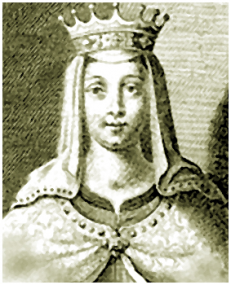
This year Queen Elizabeth II celebrated 60 years on the throne, a great achievement. Today’s society doesn’t really take much notice of whether the ruler of the country is a King or a Queen, male or female. However, this was not always the case. In fact it was always an issue until the last century or so. Occasionally the issue of gender led to women who were rightfully the next in line for the throne being pushed aside to allow a man to rule the country in their place. In the 1100’s there was a woman, the first woman of many in British history, who was next in line to rule the country. This woman had to fight for her right to rule simply because she was a female. This woman was called Matilda. King Henry I, who ruled from 1100 – 1135, had two children, Matilda and William. However when William, the only male heir, died suddenly it left Henry I with only his daughter to rule England after him. The King made his noblemen swear allegiance to Matilda to ensure that she would become Queen after his death, the first Queen in England’s history.
Matilda was already an Empress, having married the German Emperor Henry V, but would she be able to become Queen of England? After Henry I’s death in 1135 the people of England soon began to turn against Matilda, not wanting to be ruled by a woman. The common view was that women were unable to rule as well as men, so it was very hard for people to accept a woman having the highest ranking position in the country. Soon someone else came forward to claim the throne as theirs, Matilda’s male cousin Stephen. This led to a divide of allegiance in England, some supporting Matilda and others supporting Stephen. This split in the country shows just how much of an issue the gender of a monarch was. It also highlights how much women’s positions have changed over the years, with the rights of women being challenged not only in medieval times but up until the last 100 years with the suffragette movement which secured the vote for women, a vote which most of us take for granted. In fact all women throughout history have been questioned and challenged when they have come to the throne or simply made a stand for their beliefs. Queen Elizabeth I had difficulty when she first came to the throne, with many nobles referring to her as a ‘prince of the female gender' however she soon took this in her stride, as did Queen Victoria when she was made Queen in 1837. This shift in society highlights just how great an achievement it is for Elizabeth II to both have ruled for 60 years.

0 Comment:
Be the first one to comment on this article.